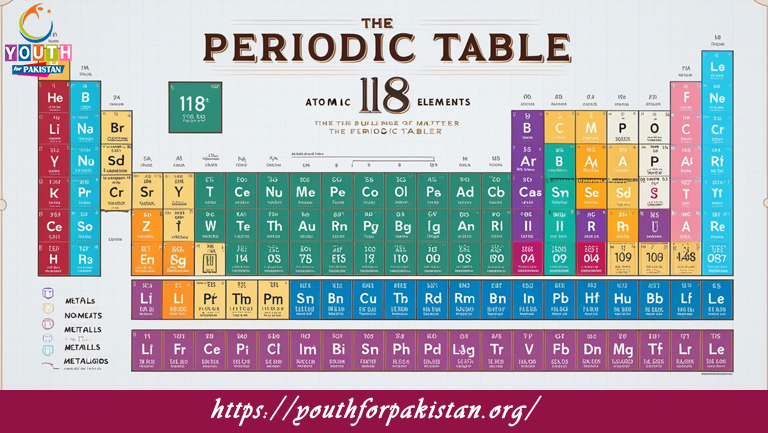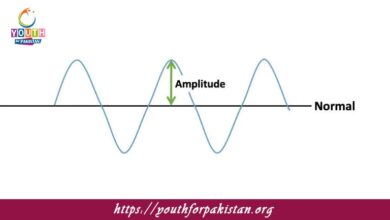Group Trends Atomic Radii MDCAT MCQs with Answers

Welcome to the Group Trends Atomic Radii MDCAT MCQs with Answers. In this post, we have shared Group Trends Atomic Radii Multiple Choice Questions and Answers for PMC MDCAT 2024. Each question in MDCAT Chemistry offers a chance to enhance your knowledge regarding Group Trends Atomic Radii MCQs in this MDCAT Online Test.
As you move down a group in the periodic table, the atomic radius:
a) Increases
b) Decreases
c) Remains constant
d) First decreases, then increases
The atomic radius of elements in Group 1A generally:
a) Decreases as you move down the group
b) Increases as you move down the group
c) Remains constant down the group
d) Increases, then decreases
Which of the following elements has the largest atomic radius in Group 2A?
a) Beryllium (Be)
b) Magnesium (Mg)
c) Calcium (Ca)
d) Barium (Ba)
In Group 17 (Halogens), the atomic radius:
a) Increases down the group
b) Decreases down the group
c) Remains unchanged
d) Increases, then decreases
Which element has the smallest atomic radius in Group 16?
a) Oxygen (O)
b) Sulfur (S)
c) Selenium (Se)
d) Tellurium (Te)
Moving down a group, the atomic radius increases because:
a) The effective nuclear charge increases
b) The number of electron shells increases
c) The nuclear charge decreases
d) The shielding effect decreases
In Group 1A, which element has the smallest atomic radius?
a) Lithium (Li)
b) Sodium (Na)
c) Potassium (K)
d) Rubidium (Rb)
Which of the following elements has the largest atomic radius in Group 15?
a) Nitrogen (N)
b) Phosphorus (P)
c) Arsenic (As)
d) Bismuth (Bi)
As you move down Group 14, the atomic radius:
a) Decreases
b) Increases
c) First increases, then decreases
d) Remains the same
The atomic radius of halogens increases in the order:
a) F < Cl < Br < I
b) I < Br < Cl < F
c) F > Cl > Br > I
d) Cl < F < I < Br
Which element has the smallest atomic radius in Group 1A?
a) Lithium (Li)
b) Sodium (Na)
c) Potassium (K)
d) Cesium (Cs)
In Group 2A, the atomic radius is largest for:
a) Beryllium (Be)
b) Magnesium (Mg)
c) Calcium (Ca)
d) Barium (Ba)
The trend in atomic radii down Group 17 is due to:
a) Increasing nuclear charge
b) Increasing number of electron shells
c) Decreasing atomic mass
d) Decreasing number of electron shells
Which of the following elements has the smallest atomic radius in Group 2A?
a) Beryllium (Be)
b) Magnesium (Mg)
c) Calcium (Ca)
d) Strontium (Sr)
In Group 16, the atomic radius:
a) Increases down the group
b) Decreases down the group
c) First increases, then decreases
d) Remains unchanged
Which element has the largest atomic radius in Group 14?
a) Carbon (C)
b) Silicon (Si)
c) Germanium (Ge)
d) Tin (Sn)
As you move down Group 15, the atomic radius:
a) Decreases
b) Increases
c) Remains constant
d) Increases, then decreases
Which element has the smallest atomic radius in Group 17?
a) Fluorine (F)
b) Chlorine (Cl)
c) Bromine (Br)
d) Iodine (I)
The trend in atomic radius down a group is due to:
a) Decreasing nuclear charge
b) Increasing atomic number
c) Decreasing electron affinity
d) Increasing electron shielding
In Group 2A, the atomic radius increases most significantly between which two elements?
a) Be and Mg
b) Mg and Ca
c) Ca and Sr
d) Sr and Ba
In Group 17, which element has the smallest atomic radius?
a) Fluorine (F)
b) Chlorine (Cl)
c) Bromine (Br)
d) Iodine (I)
The atomic radius increases as you move down a group due to:
a) Increasing number of protons
b) Increasing number of electron shells
c) Decreasing ionization energy
d) Decreasing nuclear charge
In Group 1A, which element has the largest atomic radius?
a) Lithium (Li)
b) Sodium (Na)
c) Potassium (K)
d) Cesium (Cs)
The atomic radius of Group 16 elements increases in the order:
a) O < S < Se < Te
b) Te < Se < S < O
c) O > S > Se > Te
d) S < O < Te < Se
The atomic radius trend down a group is similar for which of the following pairs?
a) Group 1A and Group 2A
b) Group 1A and Group 17
c) Group 16 and Group 17
d) Group 14 and Group 15
In Group 1A, the atomic radius of alkali metals:
a) Decreases as you move down the group
b) Increases as you move down the group
c) Remains the same down the group
d) Increases, then decreases
The smallest atomic radius among the halogens is found in:
a) Fluorine (F)
b) Chlorine (Cl)
c) Bromine (Br)
d) Iodine (I)
The atomic radius of elements in Group 2A generally:
a) Increases down the group
b) Decreases down the group
c) Remains constant
d) Increases, then decreases
Which element has the smallest atomic radius in Group 16?
a) Oxygen (O)
b) Sulfur (S)
c) Selenium (Se)
d) Tellurium (Te)
The trend in atomic radii down Group 14 is due to:
a) Increasing number of electron shells
b) Increasing nuclear charge
c) Decreasing electron affinity
d) Increasing atomic mass
Which of the following elements has the largest atomic radius in Group 17?
a) Fluorine (F)
b) Chlorine (Cl)
c) Bromine (Br)
d) Iodine (I)
The atomic radius of elements in Group 15 generally:
a) Decreases as you move down the group
b) Increases as you move down the group
c) Remains constant down the group
d) Increases, then decreases
The trend in atomic radii down Group 1A is due to:
a) Increasing nuclear charge
b) Increasing number of electron shells
c) Decreasing atomic number
d) Decreasing electron affinity
Which of the following elements has the smallest atomic radius in Group 14?
a) Carbon (C)
b) Silicon (Si)
c) Germanium (Ge)
d) Tin (Sn)
The atomic radius increases as you move down Group 2A due to:
a) Increasing number of electron shells
b) Decreasing nuclear charge
c) Increasing electron affinity
d) Decreasing ionization energy
Which of the following elements has the largest atomic radius in Group 14?
a) Carbon (C)
b) Silicon (Si)
c) Germanium (Ge)
d) Lead (Pb)
In Group 1A, which element has the smallest atomic radius?
a) Hydrogen (H)
b) Lithium (Li)
c) Sodium (Na)
d) Potassium (K)
Which of the following elements has the smallest atomic radius in Group 13?
a) Boron (B)
b) Aluminum (Al)
c) Gallium (Ga)
d) Indium (In)
The atomic radius trend down Group 16 is due to:
a) Increasing number of electron shells
b) Increasing nuclear charge
c) Decreasing electron affinity
d) Increasing atomic mass
Which of the following elements has the largest atomic radius in Group 13?
a) Boron (B)
b) Aluminum (Al)
c) Gallium (Ga)
d) Indium (In)
If you are interested to enhance your knowledge regarding Physics, Chemistry, Computer, and Biology please click on the link of each category, you will be redirected to dedicated website for each category.




